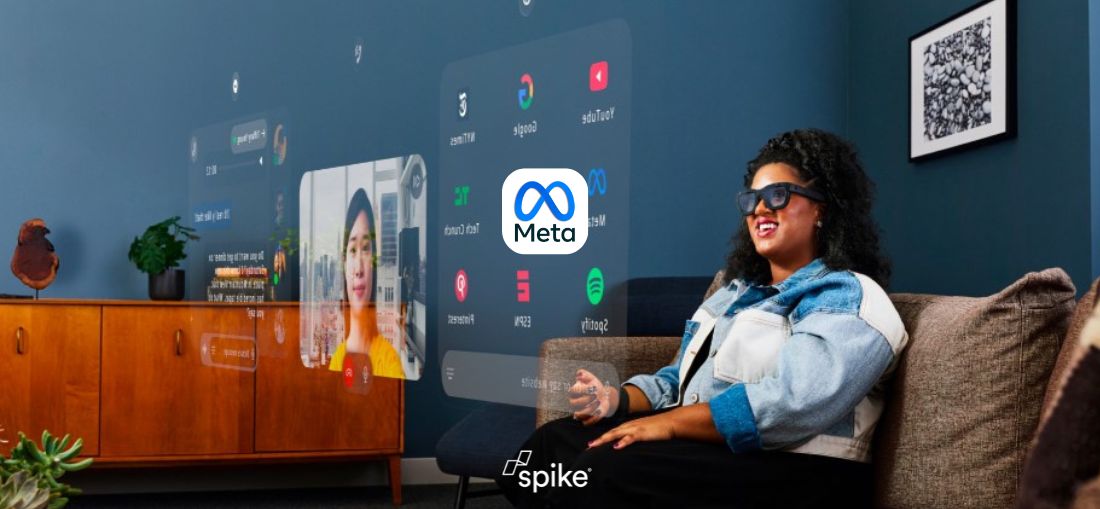Five years ago, Meta announced its plan to develop augmented reality (AR) glasses, aiming to integrate digital information into the physical world without sacrificing presence in real life. Today, Meta introduces Orion, a groundbreaking pair of AR glasses, which the company describes as “the most advanced pair of AR glasses ever made.” Orion seeks to bridge the physical and virtual worlds, enhancing human connectivity and empowerment by placing people at the center of AR experiences.
Why AR Glasses?
Meta sees AR glasses as essential for the next evolution in computing. They state three main reasons for this:
- Expansive Digital Experiences: AR glasses like Orion allow for large holographic displays, enabling users to interact with 2D and 3D content in the physical world, unconstrained by the limitations of smartphone screens.
- Contextual AI Integration: These glasses integrate advanced AI that senses and understands the surroundings, providing proactive assistance based on context.
- Comfort and Usability: Lightweight and suitable for both indoor and outdoor use, AR glasses allow users to see the world, including other people’s faces and expressions, facilitating human interaction.
Meta envisions AR glasses as the future of wearables, combining immediacy, contextualised AI, and large displays in a form factor that people would be comfortable wearing in everyday life.
images courtesy of Meta
The Evolution of Smart Glasses
The company’s Ray-Ban Meta glasses already showcase how AI-driven, hands-free interaction can integrate digital experiences into daily life. Users can interact with a smart assistant, connect with friends, and capture moments, all without pulling out their phones. But Meta has always aimed for true AR glasses that combine large holographic displays with AI assistance. Orion represents the next step toward this goal.
Orion’s Groundbreaking Display
Meta has worked for years to miniaturize the technology used in virtual and mixed-reality headsets, fitting it into lightweight, stylish glasses. This process involved innovations to shrink the components to a fraction of a millimeter, creating a compact design that is both functional and aesthetically pleasing. Orion boasts the largest field of view for AR glasses to date, unlocking immersive experiences such as multitasking with windows, big-screen entertainment, and life-sized holograms, all blending seamlessly with the user’s physical surroundings.
Orion’s transparency and ability to reveal the wearer’s eyes distinguish it from mixed reality (MR) headsets, offering a more natural, shared experience for interacting with others.
Augmented Reality Experiences
While still in development, Orion already supports exciting applications. Meta’s AI assistant can offer real-time assistance by recognising objects in the physical world. For instance, users can ask for recipe suggestions based on the contents of their refrigerator or video call a friend while managing a digital calendar. The glasses also facilitate hands-free messaging and video calls on platforms like WhatsApp and Messenger, eliminating the need for a phone.
Meta continues to enhance Orion’s capabilities, with teams iterating on immersive social experiences to improve usability.
A Polished Prototype, Not Yet for Consumers
Although Orion won’t be immediately available to the public, Meta emphasises that it is not merely a research prototype. It is one of the most polished prototypes Meta has ever developed, representing a potential consumer-ready product. However, the company is opting for internal development and testing to refine the technology further before releasing it to consumers.
Why is this important?
Meta is opening access to Orion for select internal teams and external audiences to gather feedback, refine the product, and push the boundaries of AR technology. Key focuses moving forward include improving display quality, reducing the size of the glasses, and scaling production to make them affordable.
While Orion is still in development, Meta plans to release new devices in the coming years, building on this R&D to make AR more accessible and transformative for everyday users.
